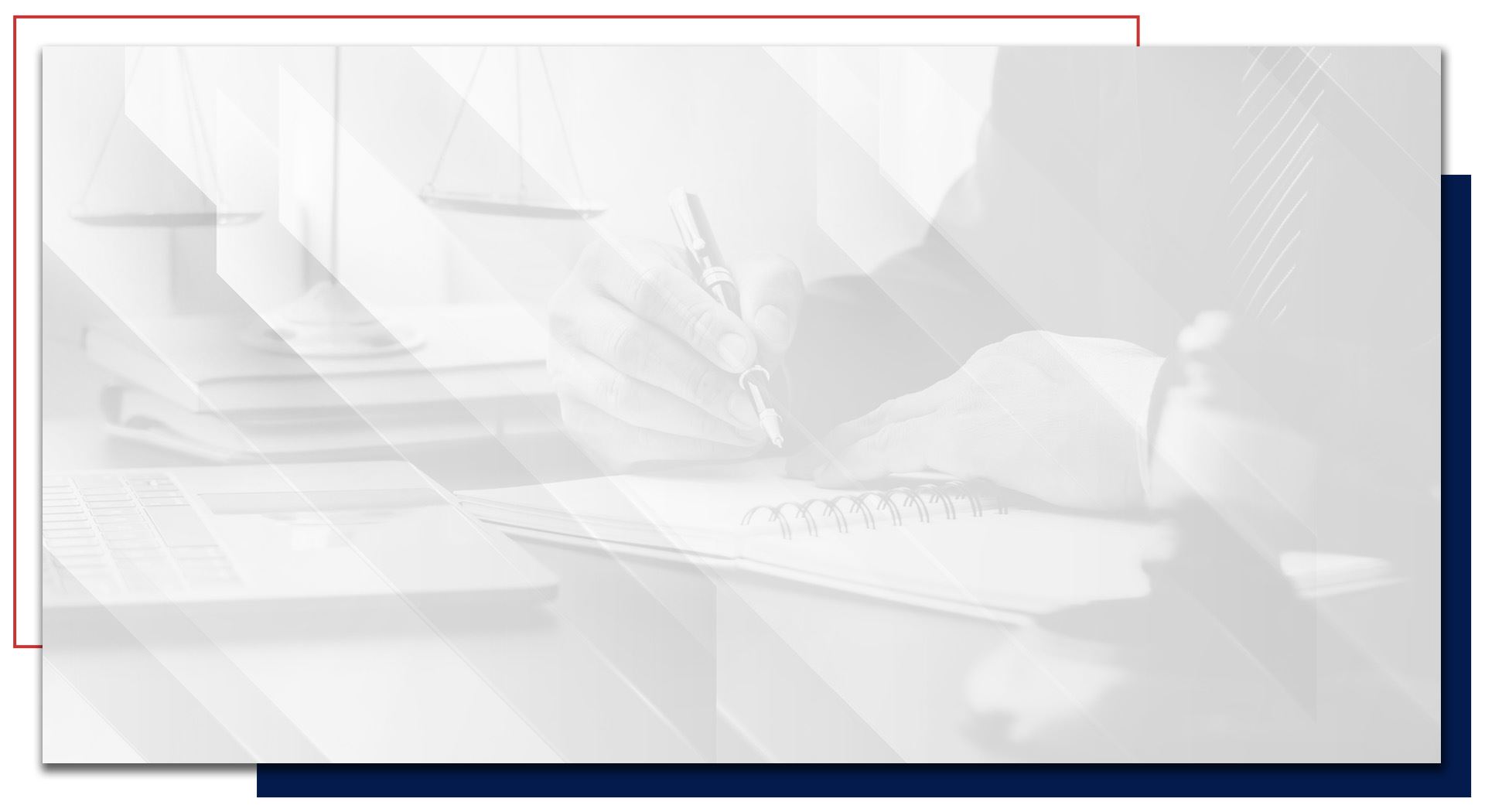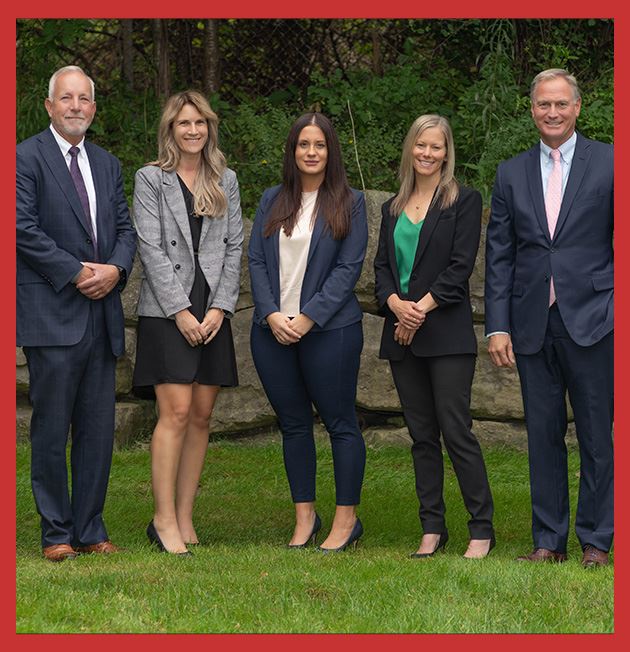
What to Do in the Event of an Auto Accident
Our Rochester Car Accident Lawyers Can Help
Being involved in a serious motor vehicle accident is, for most people, one of the most traumatic experiences in their lives. Obviously, of first importance is taking care of any physical injuries you or your family members have suffered in the accident.
But once the initial injuries have been addressed, it is important to understand your rights, duties, and responsibilities under New York law in the event of an auto accident, as failure to do so could result in the loss of benefits under your insurance policy that you have paid premiums for and are entitled to receive. Keep reading to learn more about the steps you should take to protect yourself and your family.
Injured in a car accident in Buffalo, Rochester, or any of the surrounding areas? Contact Faraci Lange, LLP at (888) 997-4110 to request a free consultation and learn how we can help.
At the Accident Scene
Remain calm and assess the damage to your vehicle and whether anyone in your vehicle or other involved vehicles was injured. Do not move your car unless you are blocking traffic or are otherwise in a dangerous location. If you are in a dangerous location and your car is operable, move it only to the nearest safe location or off to the side of the road. You do not want to be accused of leaving or attempting to leave the scene of an accident.
Once you have assessed the situation for damage and injuries, call an ambulance if one is needed and call the police to report the accident. When the police arrive, the officers will gather facts necessary to complete the accident report. While it is important to cooperate with the responding police officer, it is also important not to make any incriminating statements in the heat of the moment that, upon reflection, may later be regretted. Always tell the officer all of the pertinent facts but avoid opinions or apologies for what has happened.
It is important to obtain identifying information for all people and vehicles involved in the accident. This includes:
- Name
- Address
- Driver's license number
- Date of birth
- Phone number
- Insurance company for the driver and the owner of the involved vehicles
If possible, make note of the make, model, license plate number, and general areas of damage for each car involved in the auto accident. This information could be useful later, but will be much more difficult to obtain after the cars leave the scene.
After the accident scene is cleared and the injured have been taken for treatment, it is important to write down what you remember about how the auto accident happened. As time passes, many of the details will be otherwise lost.
If you are involved in an auto accident, write down:
- Where the accident occurred
- The time and date it occurred
- What the weather and road conditions were at the time
- What the traffic conditions were
- Where you were coming from and going to
- Where the other cars involved were when you first saw them and what direction they were traveling
- Whether you or the other cars had their directional signals on
- Where the points of impact were on the involved vehicles
- The speed of your car and the other cars if you can estimate it
- Whether any vehicles skidded and/or sounded their horns
Setting up the No-Fault Claim
In New York, your insurance company provides coverage for all of your medical expenses incurred in an accident up to a total of at least $50,000 (you can increase the limit for an additional premium) regardless of who or what caused the accident. This benefit is not available, however, to motorcycle operators but is available to pedestrians struck by motor vehicles (though it is the insurance policy covering the vehicle that pays the medical expenses of injured pedestrians).
When completing the paperwork for billing at a doctor's office or hospital after an auto accident, it is very important that you inform them of the fact that your injury occurred in a motor vehicle accident and to identify for them the name of your insurance company. This will serve to notify the doctor or hospital to bill your no-fault insurance carrier rather than your medical insurance carrier.
Once the initial medical issues have been addressed, you or someone on your behalf should notify your insurance company of the accident by phone as soon as possible, certainly within 48 hours. Your carrier will send you the necessary forms to obtain no-fault benefits, which must be completed and filed within 30 days of the accident. Failure to meet this very strict deadline can permit your carrier to disclaim all benefits. Therefore, notifying your insurance company and completing the necessary no-fault benefit forms are two of the most important things to do as soon as possible after the auto accident. If you have been injured in a car accident and have questions about no-fault insurance and filing a no-fault claim, contact the Buffalo car accident attorneys at Faraci Lange, LLP.
Property Damage Claims
When you notify your insurance carrier of an auto accident, one of the questions you will be asked is about damage to your car. Generally, your insurance carrier will assign one person (the adjuster) to handle your property damage claim and a different adjuster to handle your no-fault claim. There will also usually be a separate claim number for each claim. It is important to let your carrier know where the car was towed so that they can send an adjuster to evaluate the damage. This will expedite repair or replacement of your vehicle.
It is important to obtain photographs of the damage to your vehicle and, if possible, of all of the other vehicles in the accident. With regard to your property damage claim, the photographs will document the damage. If you have a claim against the at-fault driver, photographs can be very helpful in helping a jury understand how the accident happened and the forces involved.
Finally, whatever the damage to your vehicle, the amount you will receive in compensation from your insurance company will be reduced by your deductible. If the accident was not your fault, your insurance company has access to an arbitration procedure to get your deductible back from the at-fault driver. If you were not at fault, make sure to ask your carrier about getting back the deductible.
What Is Supplemental Uninsured/Underinsured Motorist Coverage?
Finally, there is a type of insurance coverage in your own insurance policy called supplemental uninsured/underinsured motorist coverage, also known as “SUM,” coverage that may provide coverage to you or your family member injured in an auto accident.
Whether this coverage is available to you for a particular accident is determined by:
- Whose fault the accident was
- The amount of your SUM coverage
- The amount of liability coverage the at-fault driver(s) has
For example, if someone ran a red light and collided with your car causing you a significant injury, that driver had the minimum coverage allowed under the law (currently $25,000) and you had $100,000 of SUM coverage in your policy, you would be entitled to recover up to $75,000 from your insurance company. In order to recover your SUM benefits you must give your carrier written notice of the possibility of a SUM claim within fairly strict time limits; failure to do so can result in the loss of this coverage. Because the time limits are so stringent, it is best to notify the insurance company of the possibility of a SUM claim even before you know how strong a possibility that is. This is yet another reason to contact a lawyer as soon as possible after a motor vehicle accident so that your legal rights can be evaluated and protected.
Contact Us Today for a Free Consultation
This checklist is provided as a guide to assisting you with the steps you should take to preserve your rights after a motor vehicle accident. Of course, the attorneys and staff at Faraci Lange, LLP are available, at no charge, to discuss these and other aspects of your potential case.
Call us at (888) 997-4110 or submit an online contact form to get in touch with our team today.
Preserving Evidence & Determining Your Legal Rights
In addition to no-fault benefits, persons injured in motor vehicle accidents may have the right to bring certain legal actions (lawsuits) as a result of the accident. By far the most common will be a case against the at-fault driver for non-economic loss. In order to bring such a suit, the law in New York requires proof of a “serious injury” as defined by law. Less common lawsuits include product liability actions against automobile manufactures or actions against municipalities regarding the design or maintenance of the roadway.
The question of what is and is not a “serious injury” is often difficult to know soon after an auto accident and, frankly, is still often difficult to determine even months later. The analysis of what constitutes a “serious injury” is complicated by the wording of the insurance law provision defining this term, which has been interpreted and reinterpreted by the courts of this state for over 30 years and still causes much confusion.
The best thing to do is to contact a reputable law firm with experience representing auto accident victims to get specific answers to all of your questions and advice about what to do next. At Faraci Lange, LLP, we have been helping accident victims deal traumatic car accidents for over 52 years. To help us help you, there are other things you can do that will make it easier to evaluate and pursue your case.
First, it is crucial to preserve any potentially important physical evidence that might be relevant to the accident. If you believe that your vehicle somehow malfunctioned and that this possibly caused the accident, any malfunctioning parts that are removed or repaired should be retained for later analysis. If the accident results in serious injuries or death, you should not allow the vehicle to be destroyed until you can obtain the advice of an attorney. Although it is often expensive to store a vehicle that has been totaled, the vehicle itself could be critical evidence in your future case and destroying it could jeopardize future recovery.
Physical evidence at the scene of an accident such as points of impact, road gouges, and skid marks, are transient, so it is imperative that this evidence be preserved and documented as soon as possible after an accident. In addition, eyewitness evidence must be preserved quickly because memory fades with time. If anyone contacts you to tell you that they witnessed the accident or you are otherwise aware of the names of any witnesses, be sure to retain contact information on each such witness and to provide that information to your attorney as soon as possible after an accident.
You will have to complete what is called an “MV-104” form after the accident; this form is sent to the New York State Department of Motor Vehicles. You should be very careful in filling out the section that asks you to describe how the accident happened and be as precise as possible in this description. If you are not careful and fill out this description casually, it can come back to haunt you later when you give a more complete version of what happened in testimony in a lawsuit. For this reason, it is unwise to file this form without first consulting with an attorney.
The adjusters or investigators for other insurance companies representing other drivers in the auto accident may try to contact you in person or by phone to take a recorded statement regarding the accident. You are not obligated to speak with them and you should generally avoid doing so. We recommend to all of our clients that they do not voluntarily provide oral or written statements to insurance carriers without the advice and presence of an attorney representing their interests.
What Is Supplemental Uninsured/Underinsured Motorist Coverage?
Finally, there is a type of insurance coverage in your own insurance policy called supplemental uninsured/underinsured motorist coverage, also known as “SUM,” coverage that may provide coverage to you or your family member injured in an auto accident.
Whether this coverage is available to you for a particular accident is determined by:
- Whose fault the accident was
- The amount of your SUM coverage
- The amount of liability coverage the at-fault driver(s) has
For example, if someone ran a red light and collided with your car causing you a significant injury, that driver had the minimum coverage allowed under the law (currently $25,000) and you had $100,000 of SUM coverage in your policy, you would be entitled to recover up to $75,000 from your insurance company. In order to recover your SUM benefits you must give your carrier written notice of the possibility of a SUM claim within fairly strict time limits; failure to do so can result in the loss of this coverage. Because the time limits are so stringent, it is best to notify the insurance company of the possibility of a SUM claim even before you know how strong a possibility that is. This is yet another reason to contact a lawyer as soon as possible after a motor vehicle accident so that your legal rights can be evaluated and protected.
Contact Us Today for a Free Consultation
This checklist is provided as a guide to assisting you with the steps you should take to preserve your rights after a motor vehicle accident. Of course, the attorneys and staff at Faraci Lange, LLP are available, at no charge, to discuss these and other aspects of your potential case.
Call us at (888) 997-4110 or submit an online contact form to get in touch with our team today.

Why Choose Faraci Lange, LLP?
-
Over 55 Years of Experience
-
11 Attorneys Listed in Best Lawyers in America®
-
3 Attorneys Are Part of the American College of Trial Lawyers
-
Focusing Solely on Personal Injury Cases
-
Compassionately Helping Injured Victims in Western NY Since 1968
"Very helpful, considerate, and compassionate!"We would highly recommend Faraci Lange and Matthew and his staff. Everyone was very helpful, considerate, and compassionate! ...
- Carol

